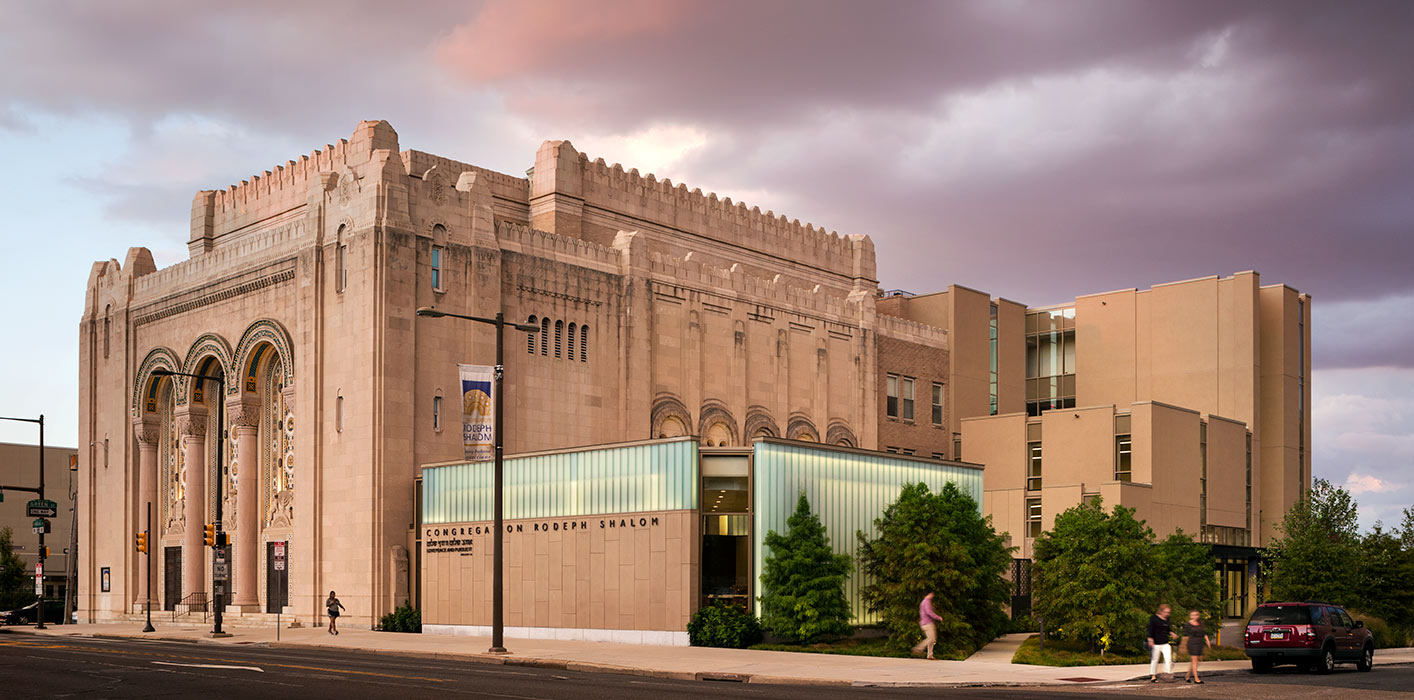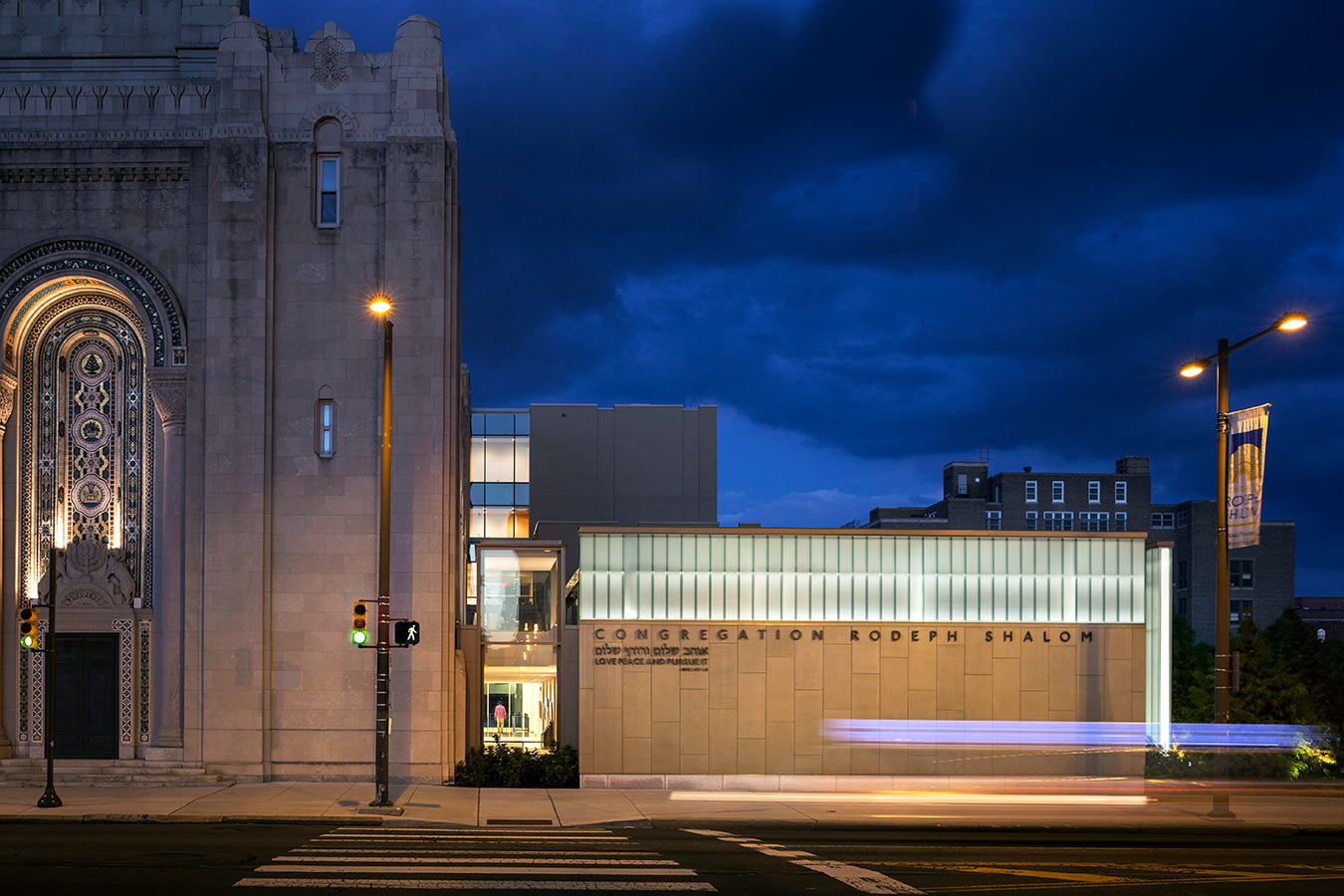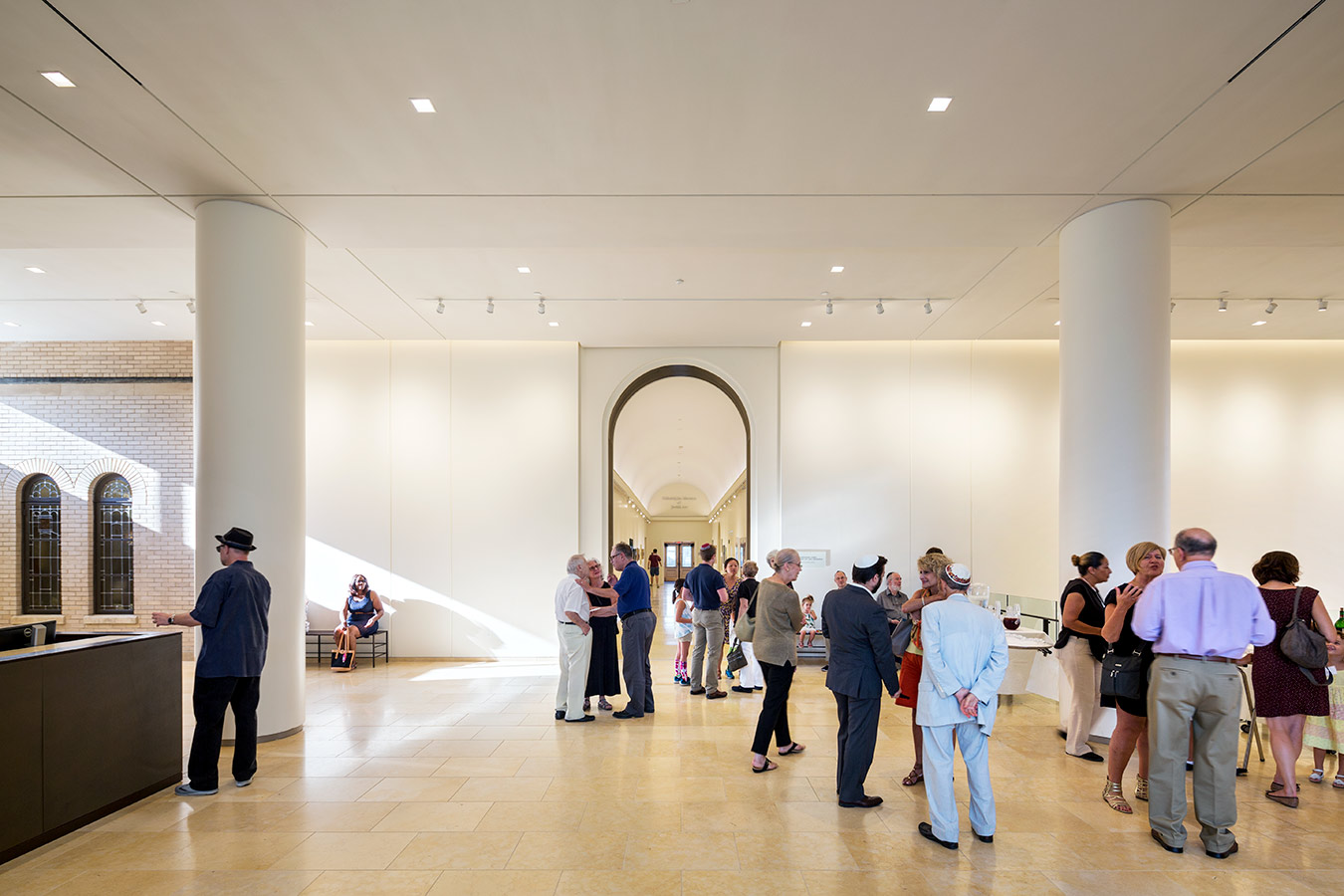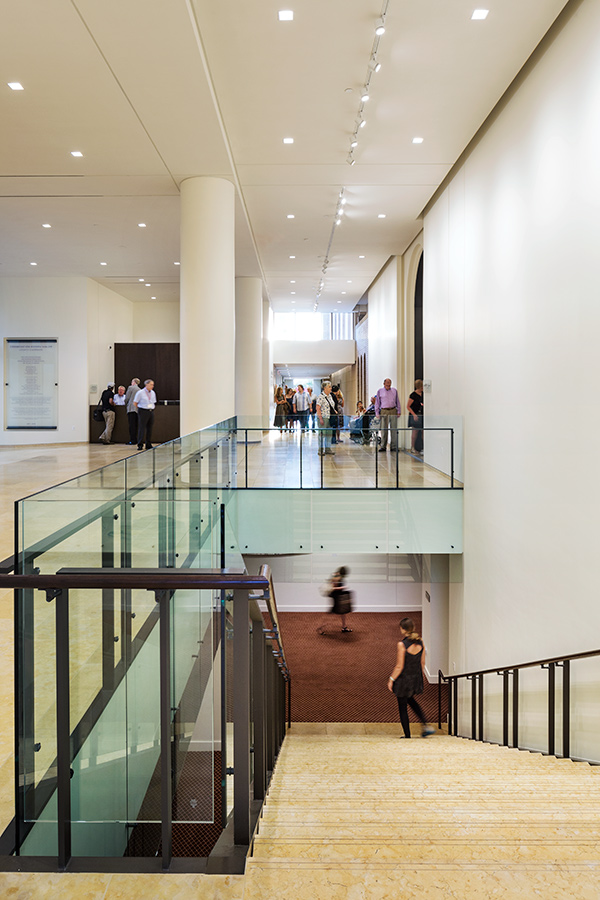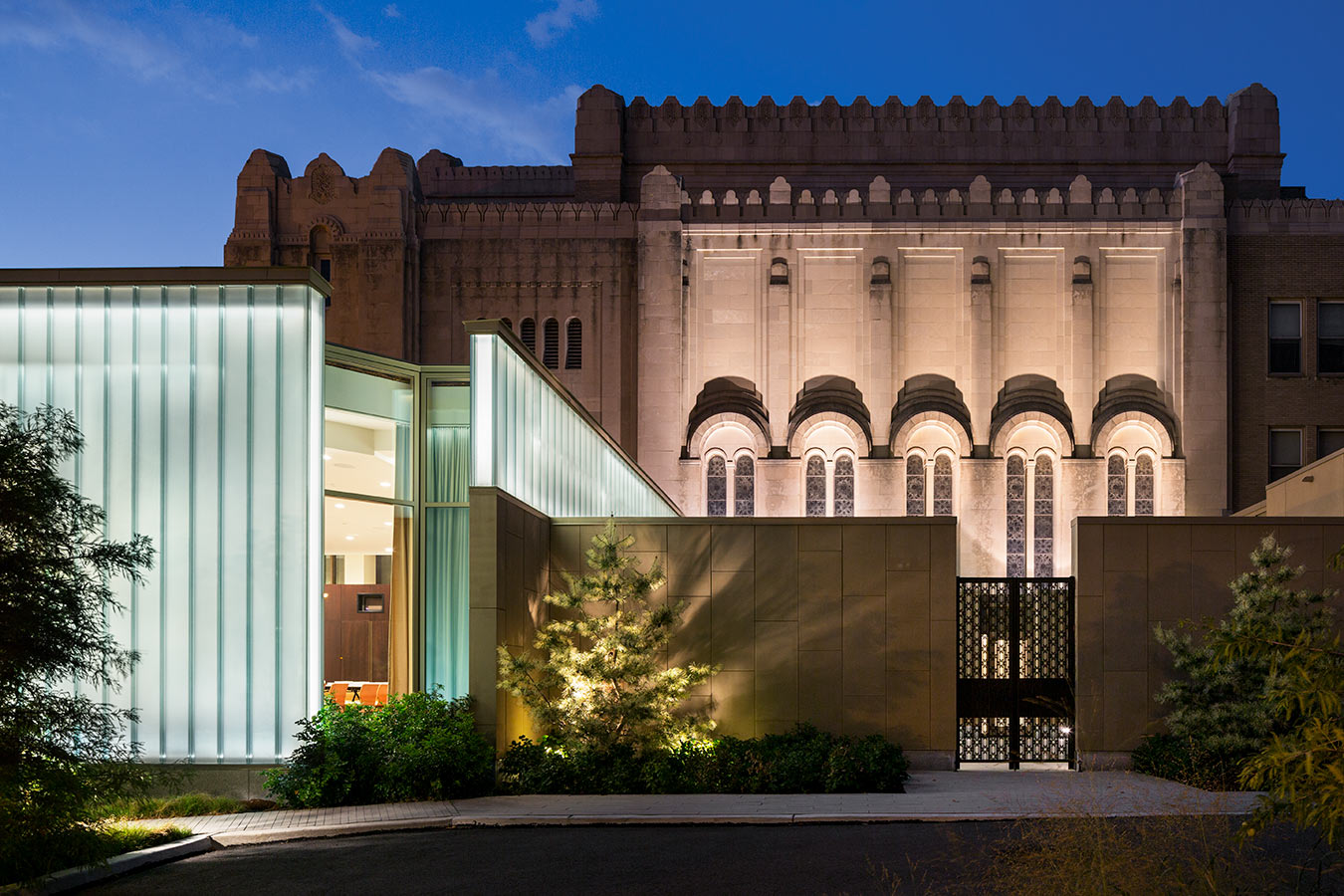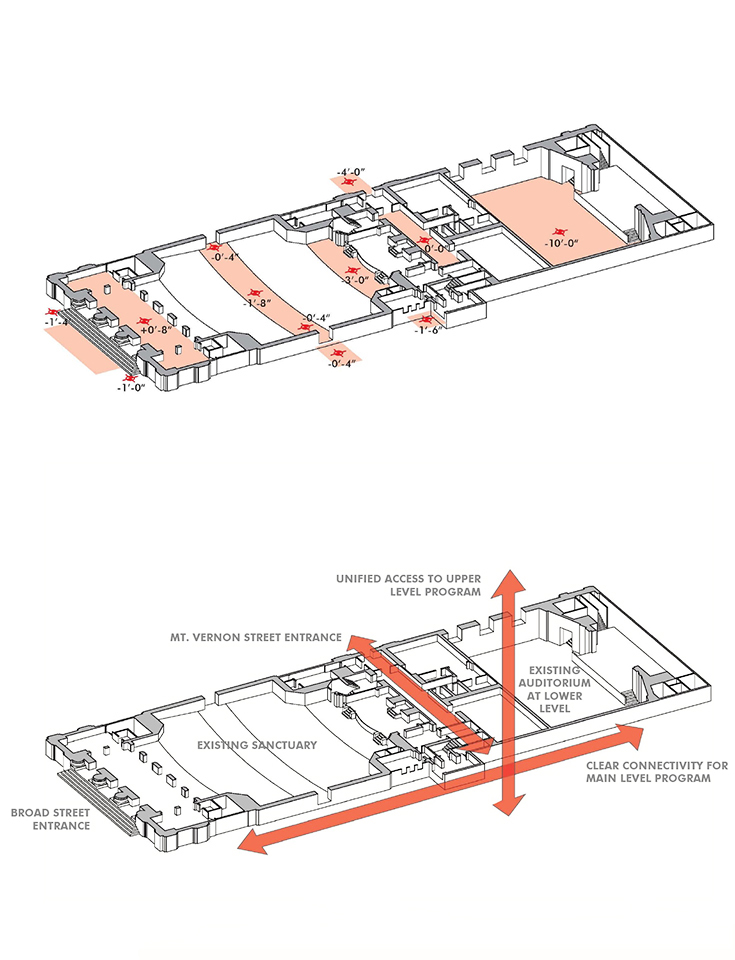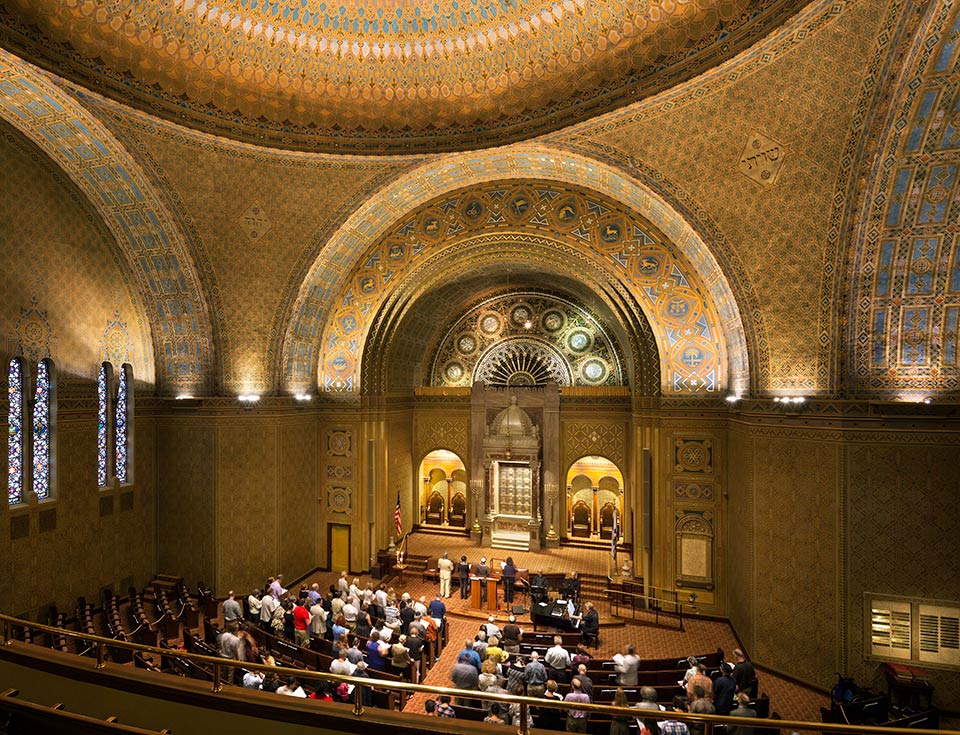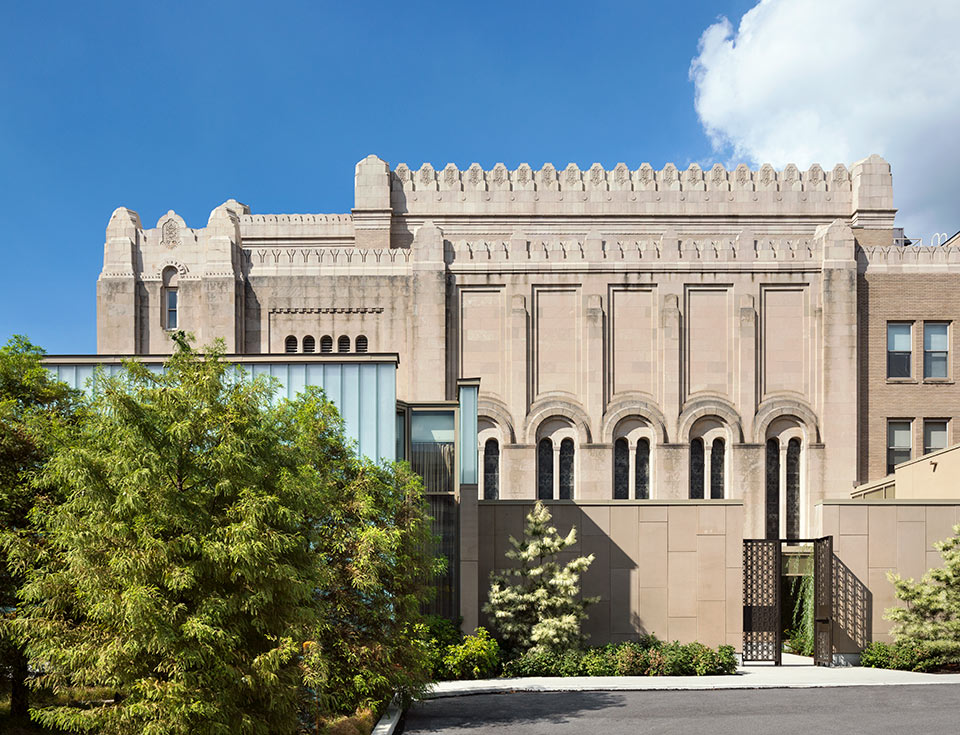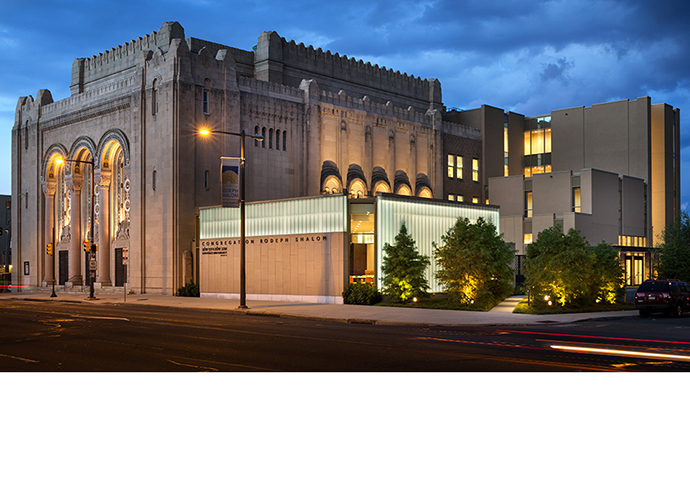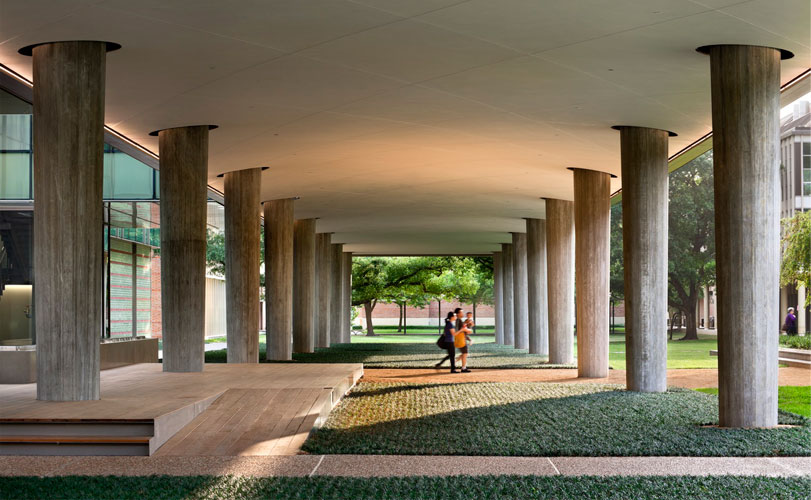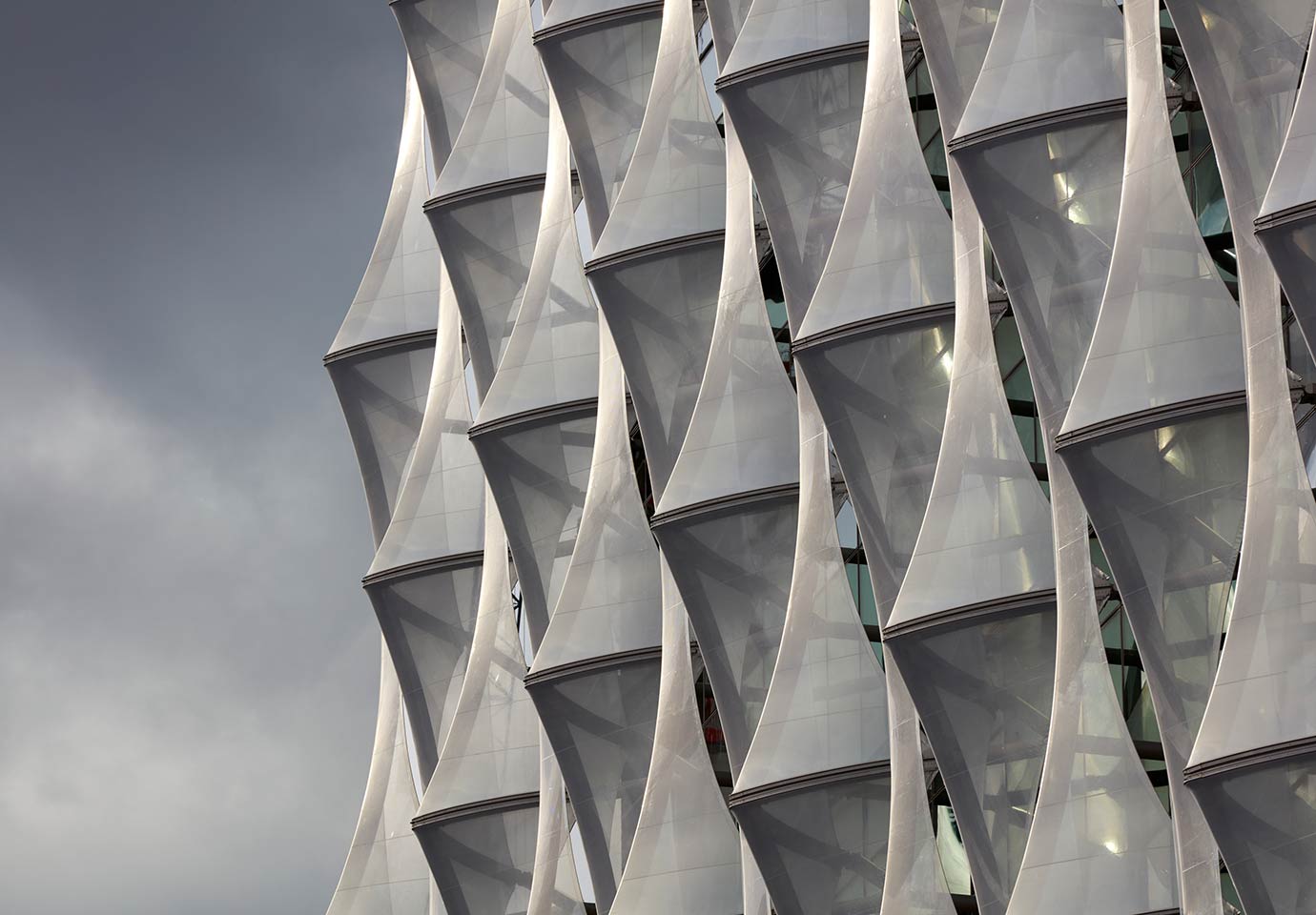How can an addition to a historic landmark deepen connections and create an open and welcoming vision for the future?
The addition on the existing building's south side provides direct connections to all of the synagogue's religious, educational, meeting, and social spaces.
Founded in 1795, Rodeph Shalom is the oldest Ashkenazic congregation in the Western Hemisphere. Its current synagogue, listed on the National Register of Historic Places, was designed by Philadelphia architecture firm Simon & Simon and completed in 1928. An outstanding example of Byzantine revival architecture, the synagogue features a limestone-clad exterior and a lavish interior with entryway mosaics, elaborate marble flooring, and hand-painted decorative stenciling.
Renovation and Expansion
Its rapidly growing congregation meant that Rodeph Shalom needed additional meeting and gathering space, as well as an expanded gallery for the Philadelphia Museum of Jewish Art housed within its walls. Additionally, while the historic building is well-loved, it was largely inaccessible and lacked interior connection between program spaces. These drawbacks, coupled with a largely opaque and somewhat foreboding exterior, undermined the congregation's vision for a welcoming and open house of prayer, study, and social action. The building's renovation made possible improvements to the historic space's connectivity and accessibility, while its addition offered the opportunity to introduce a welcoming and contemporary architectural character.
The historic existing building is an outstanding example of Byzantine revival architecture and includes a sanctuary featuring beautiful stained glass windows and hand-painted decorative stenciling.
©James Ewing Photography
The four-story addition on the building's south side provides a new and accessible entrance that is directly linked to all of the synagogue's religious, educational, meeting, and social spaces. A stairway and elevator tower rise from this entrance and lobby to the addition's fourth floor to further increase the building's connectivity and improve circulation, but their design carefully preserves views of the building's beloved southern stained glass windows. In addition to these amenities, the expansion and renovations include rabbinical and administrative offices, a community room with an adjacent courtyard for events, classrooms for an expanded early education program, and an enlarged contemporary art gallery connected to the historic Thalheimer Family Lobby and its collection of Jewish ritual artifacts.
A Concert of Old and New
Perhaps one of the most challenging aspects of the synagogue's expansion and renovation was selecting form and materials that would create a contemporary space that harmonized with such a unique and historic existing building. To begin with, the expansion's covered entryway pays homage to the rich detailing on the original building's Broad Street facade and includes bronze-clad columns and mosaic tiles. Then, to soften the existing building's imposing exterior, the expansion's community room was clad in eighteen-foot-high channel glass panels that flood the room with natural light during the day, but also afford privacy by gently obscuring views into the space. At night, the channel glass turns this community room into a luminous neighborhood beacon on the corner of Broad and Green Streets.
Visitors now enter through a newly landscaped green space that beautifies the synagogue's southern border and manages stormwater runoff on a dense urban site.
Green Space
The synagogue's renovation and expansion also included a new and transformative landscape plan for the entire block. Instead of entering the building via a large swath of sidewalk, visitors are now welcomed by a newly landscaped green space along Green Street that, in addition to beautifying the synagogue's southern border, naturally manages stormwater runoff. Included in this green space is a cluster of bald cypress trees at the corner of Broad and Green Streets that filter light and views into and out of the new community room.
Congregation Rodeph Shalom's renovations and expansion enhance circulation, improve accessibility, and encourage community, but most importantly their design enhances the historic significance of the existing building and assures the congregation's continued growth and evolution as a regional center for Jewish life.


